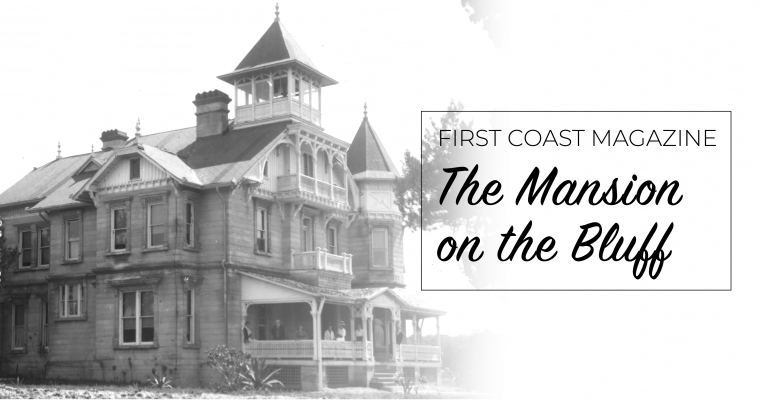In 1994, I was ten years old and had lived my entire life in this sleepy little fishing village on the Northeast Florida coast called St Augustine. In my very narrow worldview, I was under the impression that every town contained bits of historic lore like ancient Spanish fortresses and a towering old lighthouse.
But that year, I started to get an inkling there was something pretty special about my sweet city. It had been almost a decade since an ill-intended juvenile delinquent took target practice on the lens inside our lighthouse, leaving the old tower to fade into darkness each night with the setting sun. Years of community fundraisers and historic preservation rallies had finally prevailed, and the original lens built in Paris and installed in the St. Augustine Lighthouse in 1874 was restored and relit, sending its sweeping beam across my hometown for the first time in my little memory.
The whole event drew fanfare from across the country. National news outlets picked up the story; camera crews buzzed in and out of town for weeks. And then slowly, the rest of the world moved on, as it always does, looking for the next big story. Around here, nobody minded. As long as we could look up and see that familiar light in the night sky, we knew St. Augustine was going to be alright.
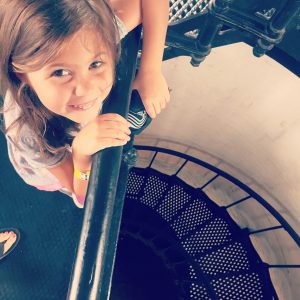 My niece on her first climb up the 219 steps at the St. Augustine Lighthouse My niece on her first climb up the 219 steps at the St. Augustine Lighthouse |
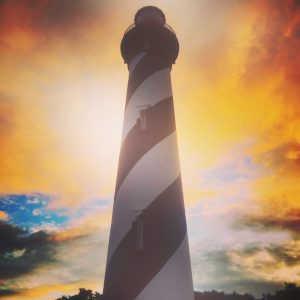 Sunset skies behind the lighthouse tower on a gorgeous Florida day. Sunset skies behind the lighthouse tower on a gorgeous Florida day. |
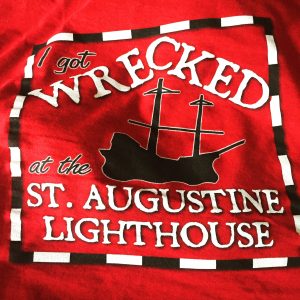 A T-shirt I designed for a new exhibit when I worked at the lighthouse. A T-shirt I designed for a new exhibit when I worked at the lighthouse. |
Almost 20 years later, I walked into the Visitors’ Center at the St. Augustine Lighthouse & Maritime Museum for a job interview. I’ll never forget the moment I was issued my key to unlock the lighthouse tower — one of my coworkers once said, “Don’t you wish you could go back and tell your eight year-old self that one day you’ll have the key to a lighthouse?”
Yes. Ten year-old me would’ve been pretty excited. But she also would’ve demanded to know why I was working in public relations for a nonprofit museum instead of living the life of a rich and famous author who owned her own island and was married to Zach Morris.
Girl, that’s a story for another time.
I spent three and a half years working at the Lighthouse, and even though I knew when it was time for me to move on, I still miss it. On my last day at the museum, just before we opened up, I climbed the 219 steps to the top, unlatched the heavy iron door, and stepped out onto the observation deck. Watching the Atlantic crash against the seashore, looking out over the city I’ve called home my whole life, I soaked in the salt air and sunshine, savoring every one of my last few moments alone in that special place.
If I haven’t yet inspired you to visit the lighthouse on your next trip to St. Augustine, let me debunk a few quick myths about the place that might make you even more inclined to go!
7 Myths About the St. Augustine Lighthouse & Maritime Museum:
1. The St. Augustine Lighthouse is owned and operated by the government.
Wrong-o! After the National Lighthouse Preservation Act of 2000, the federal government transferred ownership of the lighthouse tower to the nonprofit St. Augustine Lighthouse Museum.
Today, the Museum (which has since added “Maritime” to its moniker) still owns, operates, and maintains the Lighthouse, Keeper’s House, two World War II-era US Coast Guard structures, and two newer buildings (the Visitors’ Center and Maritime Archaeology Research Lab), as well as all the surrounding property. They receive no direct taxpayer funding, though they are eligible for some grants like any other nonprofit. All of their funding comes from donations and ticket sales.
2. The St. Augustine Lighthouse is no longer a functional lighthouse.
Not true! The lighthouse’s original, first order Fresnel lens (that’s fruh-NEL), built in Paris, France, and installed at the top of the tower in 1874, still lights up every night. It runs off of a 1000-watt light bulb and turns on or off automatically with a light sensor (unless you, hypothetically speaking, forgot to flip a certain switch inside the lens room one night and then you were over at the Conch House with the lighthouse crew having a few adult beverages when suddenly someone noticed the light wasn’t on and then you had to race back to work and climb those 219 steps after two or three-ish gin and tonics to turn that sucker on…again, hypothetically speaking).
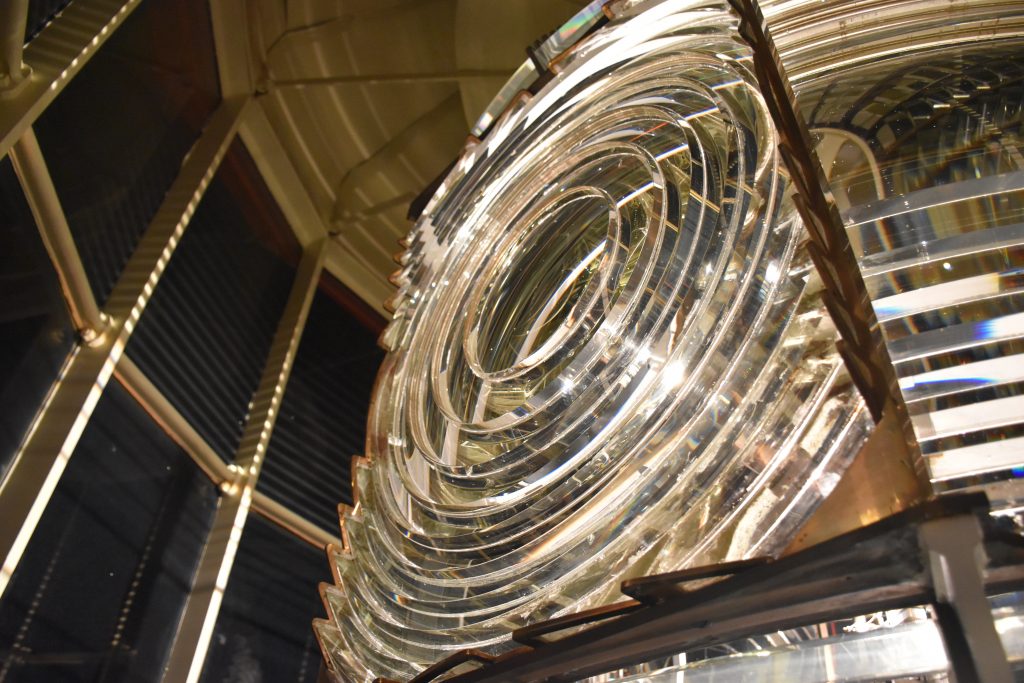
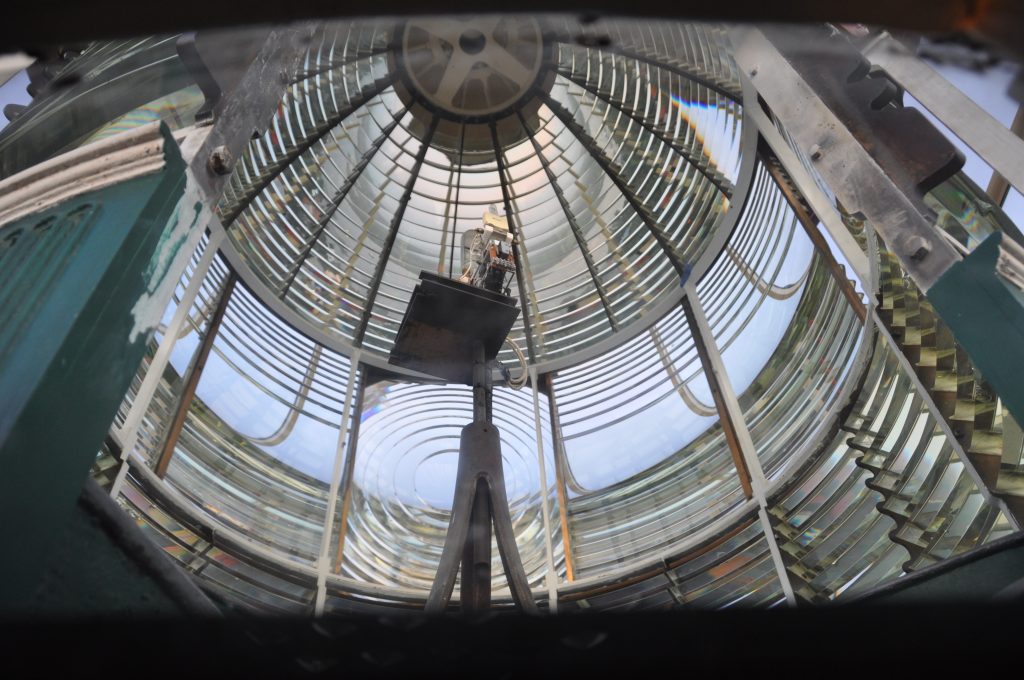
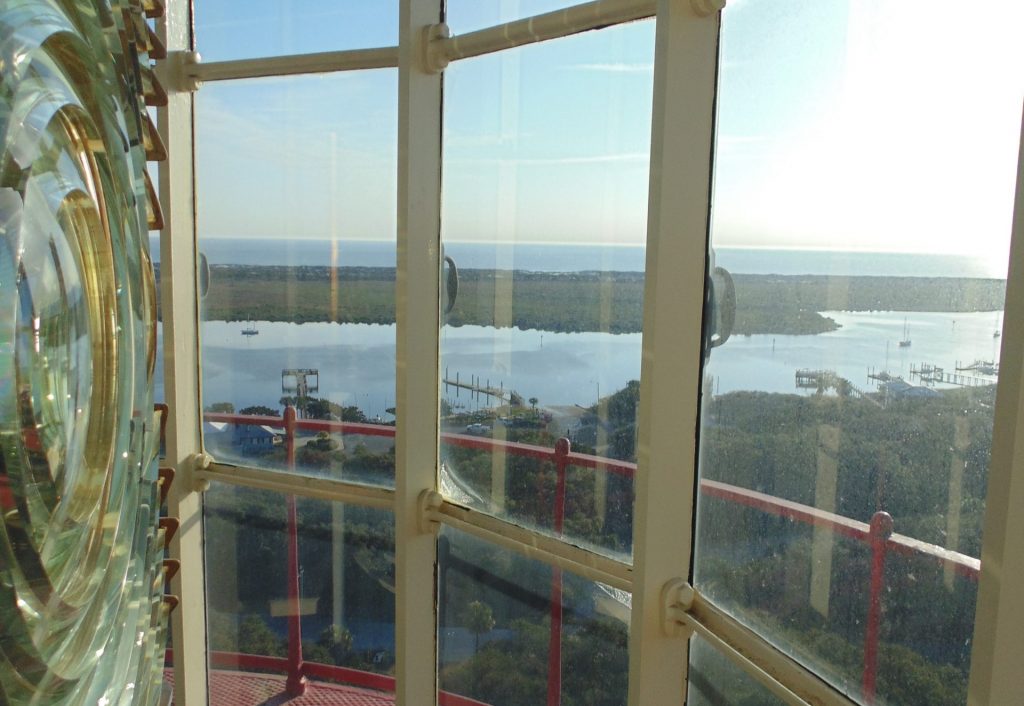
3. The St. Augustine Lighthouse is the oldest and tallest lighthouse in Florida.
Wrong AND wrong. St. Augustine was home to the first lighthouse in Florida, but that original coquina tower fell into the ocean in 1880, six years after construction was completed on the current tower in 1874. The Amelia Island Lighthouse, opened in 1839, is the oldest remaining lighthouse in Florida. At 165 feet, the St. Augustine tower is the second tallest lighthouse in Florida behind Ponce Inlet, which is 175 feet tall. St. Augustine is also the seventh tallest lighthouse in the US. (I know you wanted to know that, and now you do!)
4. The St. Augustine Lighthouse is just like every other lighthouse.
Incorrect, my friend — and I’m not just saying that because of my very obvious bias! All lighthouses are unique in two ways: the daymark and the nightmark. The daymark is the paint scheme on the outside of a lighthouse. St. Augustine’s iconic black and white barber pole stripes and red lantern were assigned by the US Lighthouse Service as the tower’s official daymark. This was so that sailors at sea could figure out where they were along the coastline from a distance.
But what happens if you come upon the shores at night? Well, every lighthouse lens has its own unique nightmark as well. St. Augustine’s lens has three bullseye panels, each of which forms a beam of light that extends 20 miles. If you’re out at sea, you can see the steady light, and then as the lens rotates, one of those beams will sweep across your eyes every 30 seconds, creating a brief flash of brighter light. That is what makes up the nightmark — a steady light with flashes thirty seconds apart.
ISN’T THAT AMAZING? It is my favorite lighthouse fact!
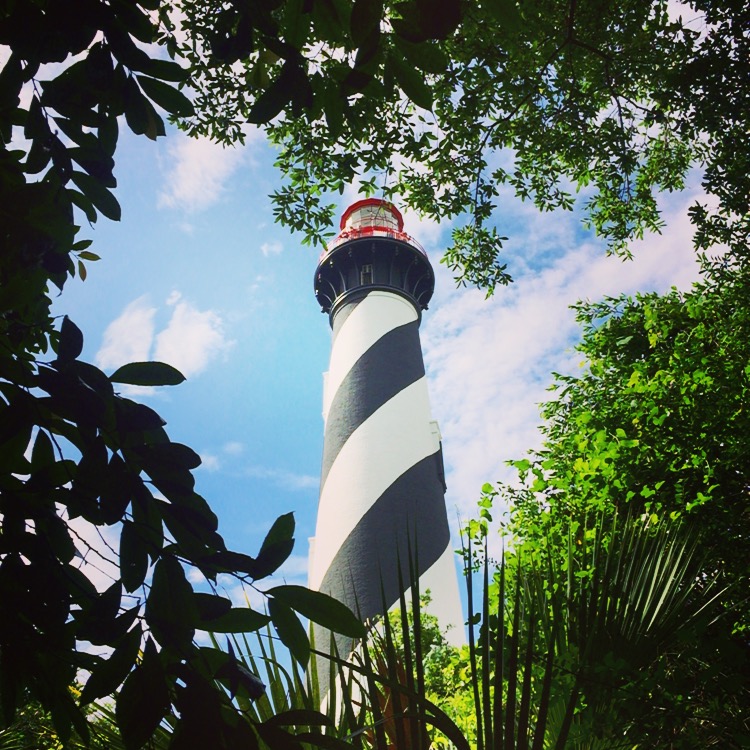 |
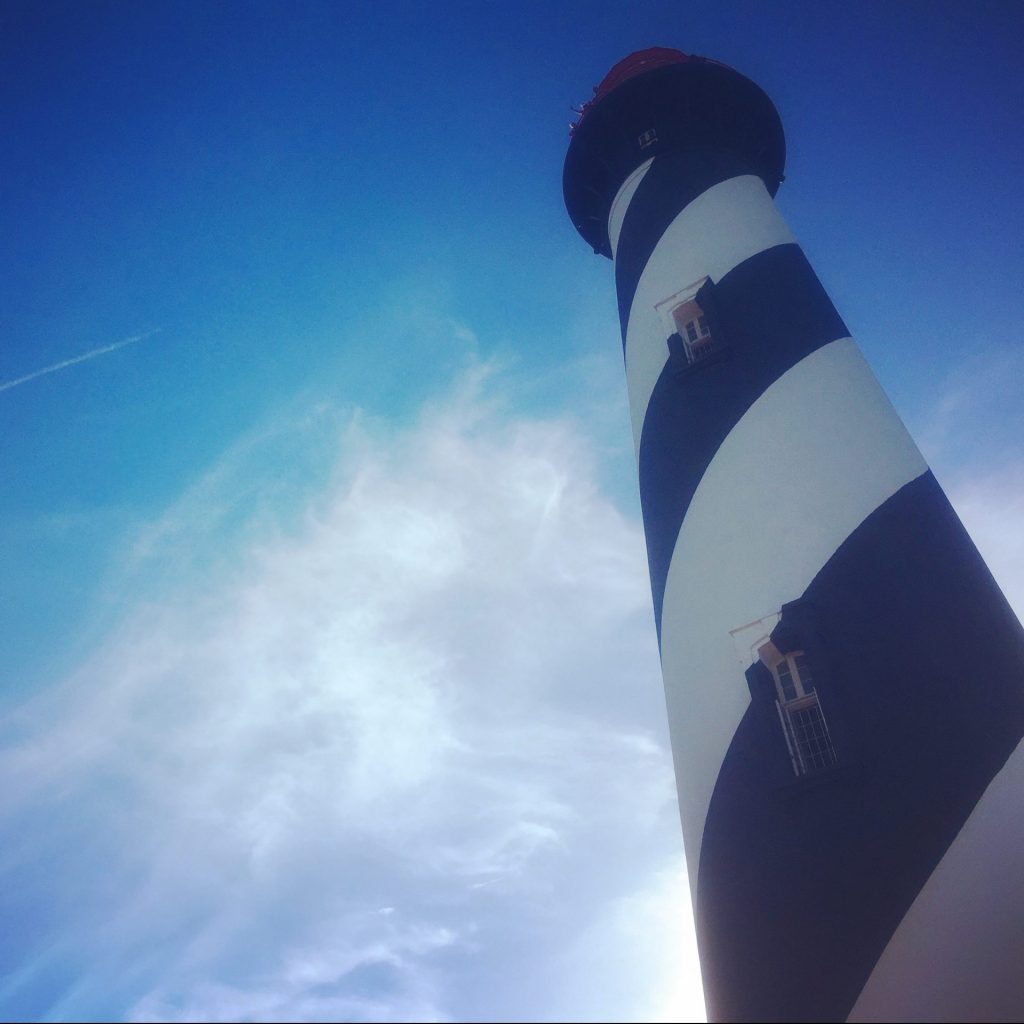 |
5. The St. Augustine Lighthouse doesn’t require any regular maintenance.
Sadly, no. If you’ve ever left anything out in the hot Florida sun too long — a beverage, a plastic lounge chair, or your own pale fleshy body, for example — you know that the elements can be pretty harsh. The St. Augustine Lighthouse is 146 years old, and while she looks great for her age, it’s not because nature has been kind to her.
Every ten to 15 years, the lighthouse has to be sandblasted down to her bare bones — just bricks and iron — and then repainted. As you might imagine, your standard hardware store paint doesn’t quite cut it. The lighthouse requires marine-grade paint that will resist the elements that cause it to fade and mildew. This paint costs several hundred bucks a gallon and it takes about 200 gallons to paint the old girl up. The most recent repainting happened in 2015, during my tenure at the museum, and it cost the nonprofit over $280,000. That’s in addition to the regular maintenance on all the historic structures on the property. It’s a lot of upkeep, but it’s worth it to keep this important piece of history alive!
6. The St. Augustine Lighthouse is *only* a lighthouse.
Not exactly true. The St. Augustine Lighthouse & Maritime Museum encompasses MUCH more than just the lighthouse tower. There are educational exhibits scattered throughout the museum campus, inside all of the historic structures and along the maritime hammock nature trails. In addition to the self-guided exhibits, the museum also provides regular educational programming for visitors and for school groups. In the summer, they host educational camps to teach local students about important elements of our maritime history. These camps also offer scholarships so that children in underserved communities can attend and learn as well.
History is not only preserved but also discovered at the St. Augustine Lighthouse. The Lighthouse Archaeological Maritime Program (LAMP, for short) is the research arm of the museum. This team of underwater archaeologists spends every summer searching the ocean floor off our coast in search of shipwrecks. They’re not treasure hunters, they’re history hunters.
So much about the storied past of the Nation’s Oldest City is preserved in these old shipwrecks. LAMP recovers artifacts from the wrecks, then restores and conserves them for exhibition at the museum so that they can tell some of these stories, like the one about a Revolutionary War-era British Loyalist ship that sank in 1782 while carrying evacuees from the 13 colonies to St. Augustine, which was a British-occupied port at the time.
|
|
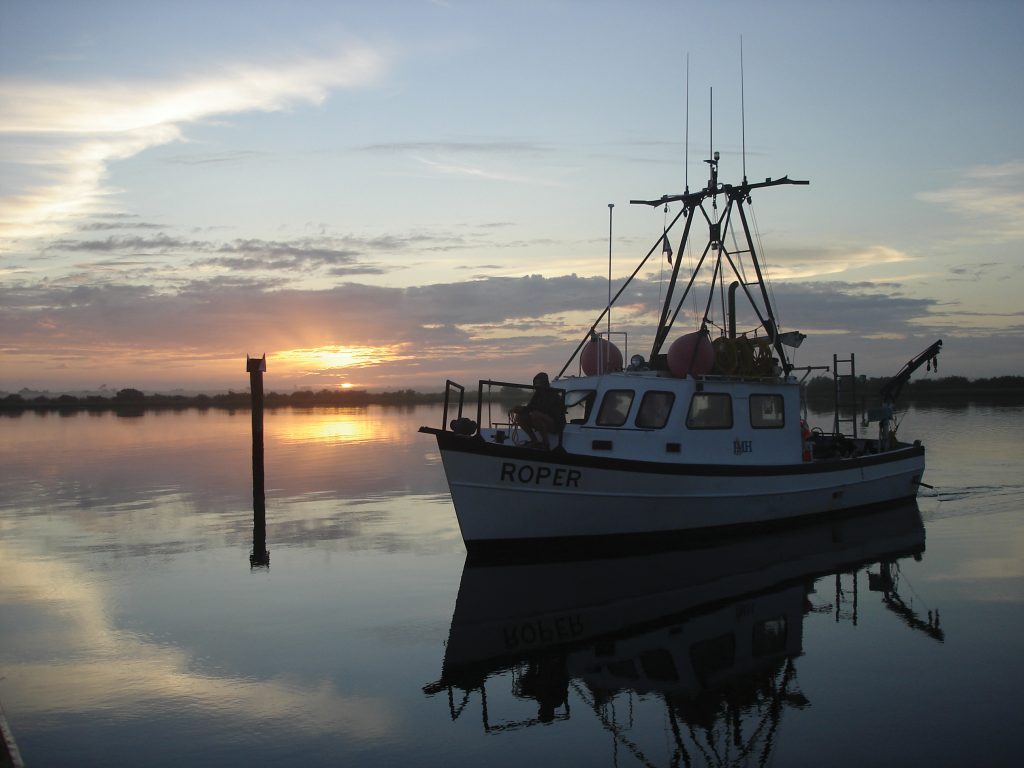 LAMP’s trusty research vessel, the RV-Roper heading out to sea. LAMP’s trusty research vessel, the RV-Roper heading out to sea. |
7. The St. Augustine Lighthouse is haunted.
Okay, so I can’t really bust this myth.
I don’t know if the lighthouse is haunted or not, but I do know some weird things happened while I was there that I can’t explain. While I never saw any Casper-type ghostly apparitions or anything, my eyeballs did bear witness to some of the wet, child-sized footprints that would occasionally appear on the tower landings and in the Keeper’s House. We would typically stumble across these footprints while opening up the museum first thing in the morning.
They were always small, bare, and wet.
The wet part is important because of a tragic accident that happened while the lighthouse tower was under construction in 1873. Three little girls, two of whom were the daughters of the construction supervisor for the lighthouse, were playing around in a rail car that took supplies from the construction site down to the water when the cart started rolling down the tracks toward the dock. Construction workers rushed after them, but the cart picked up speed and wound up flipping over into the water, trapping the girls underneath where they unfortunately drowned.
Some people have reported hearing children’s laughter, feeling something like a little one tugging at their clothes, or even seeing a little girl in a blue dress. A wet, blue dress.
I don’t know about all that, but I did see the footprints. More than once. And it was weird. I also avoided being on the grounds at night alone, especially when it came to going into the Keeper’s House basement or inside the tower. You can believe whatever you want, but I wasn’t taking any chances.
As evidence, I will leave you with this promotional video I made during my tenure for the museum’s Dark of the Moon paranormal tours.
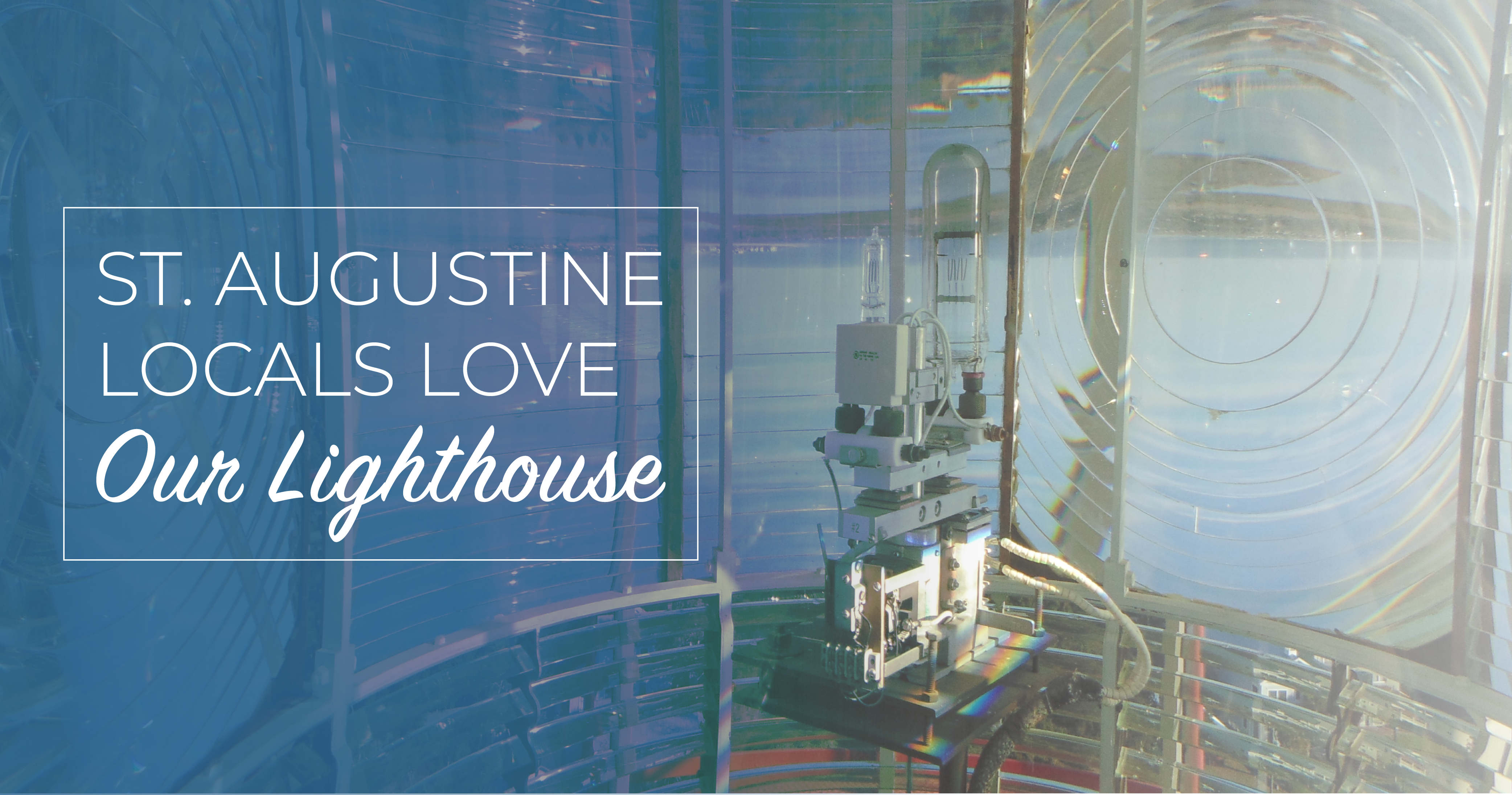
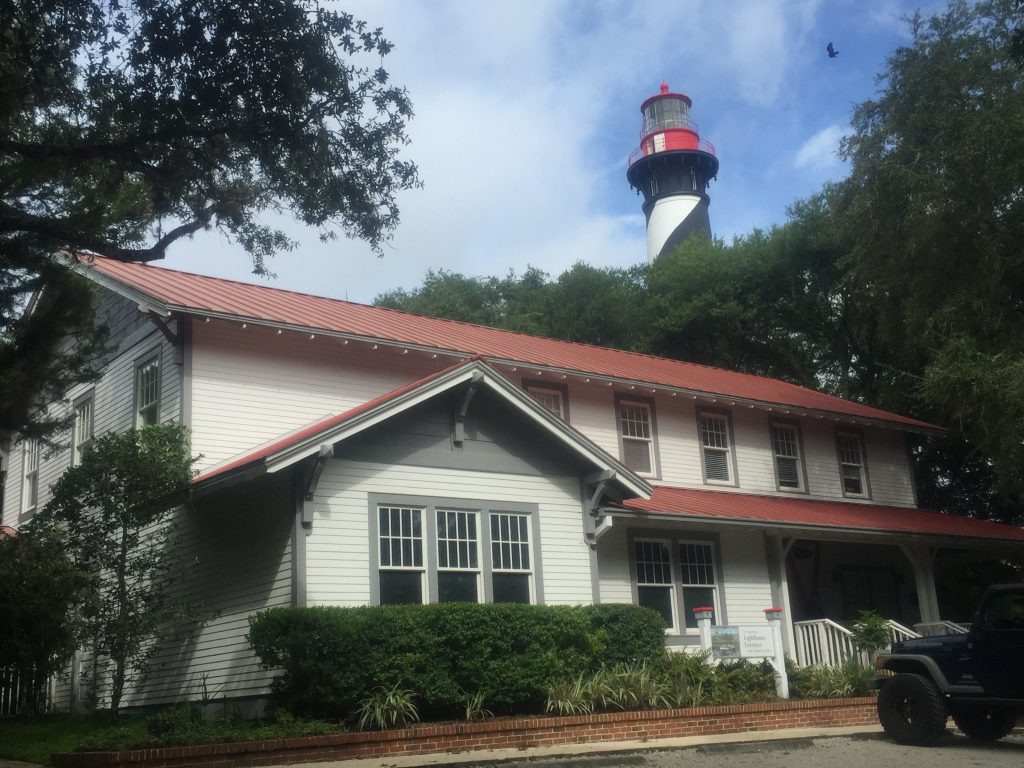
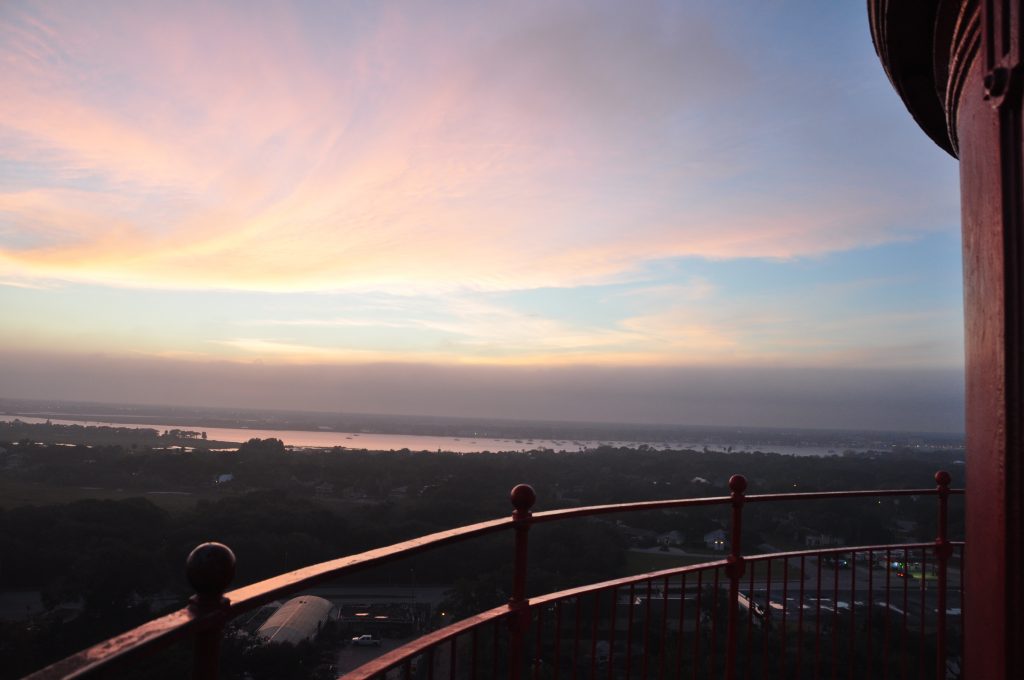
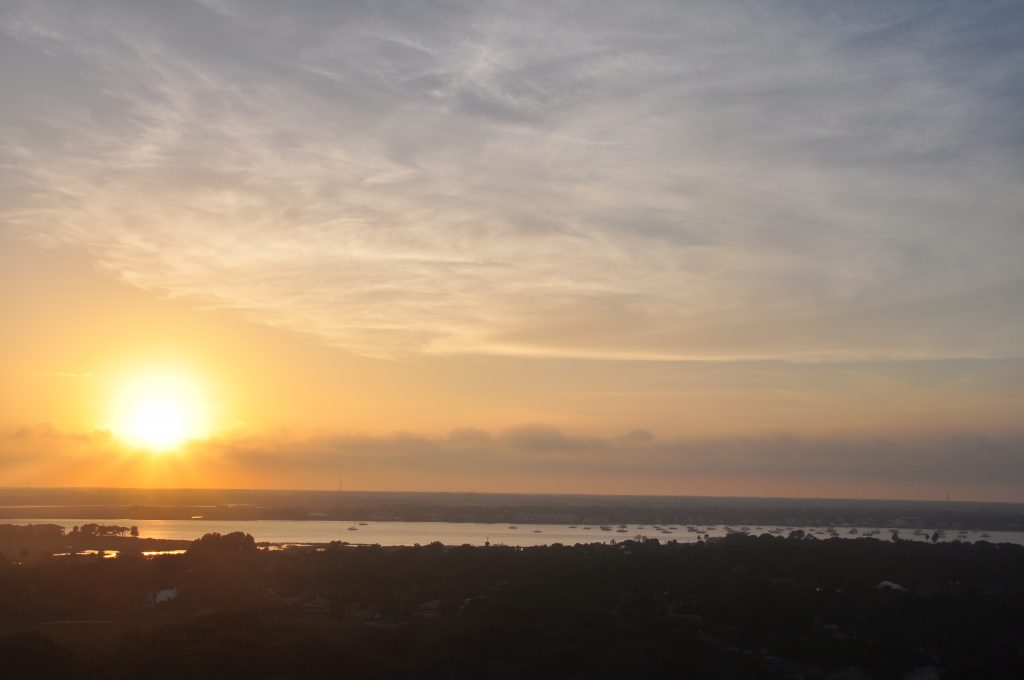
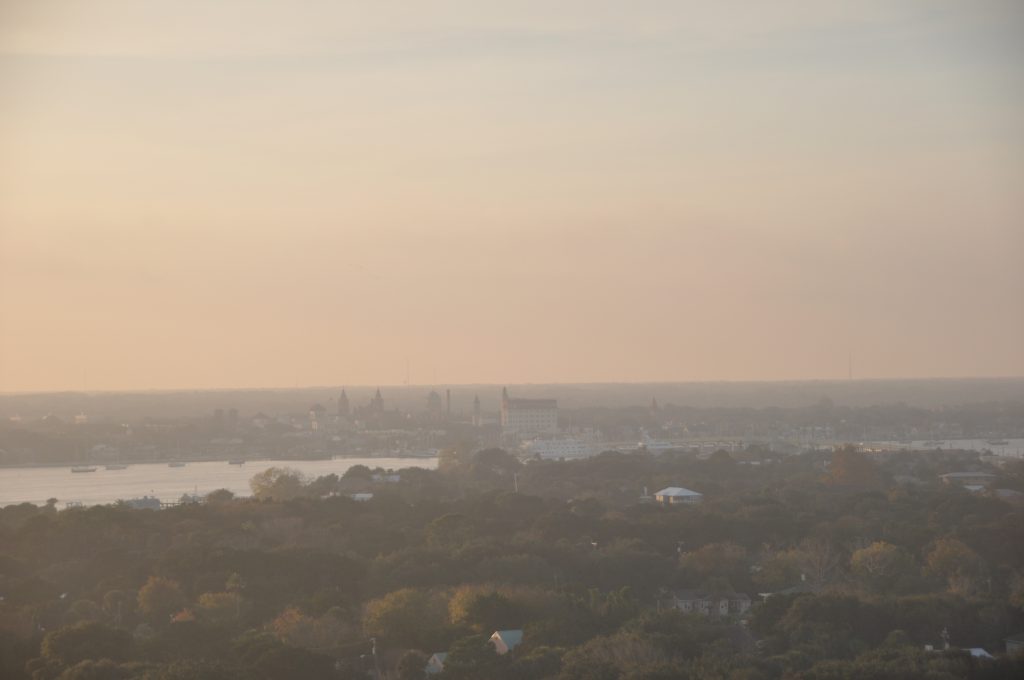
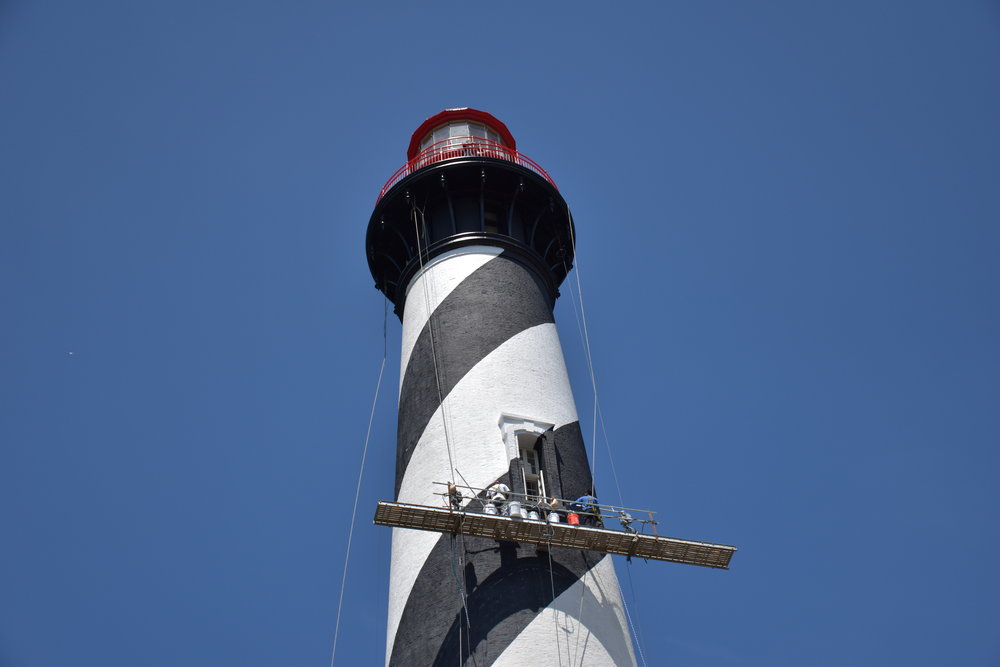
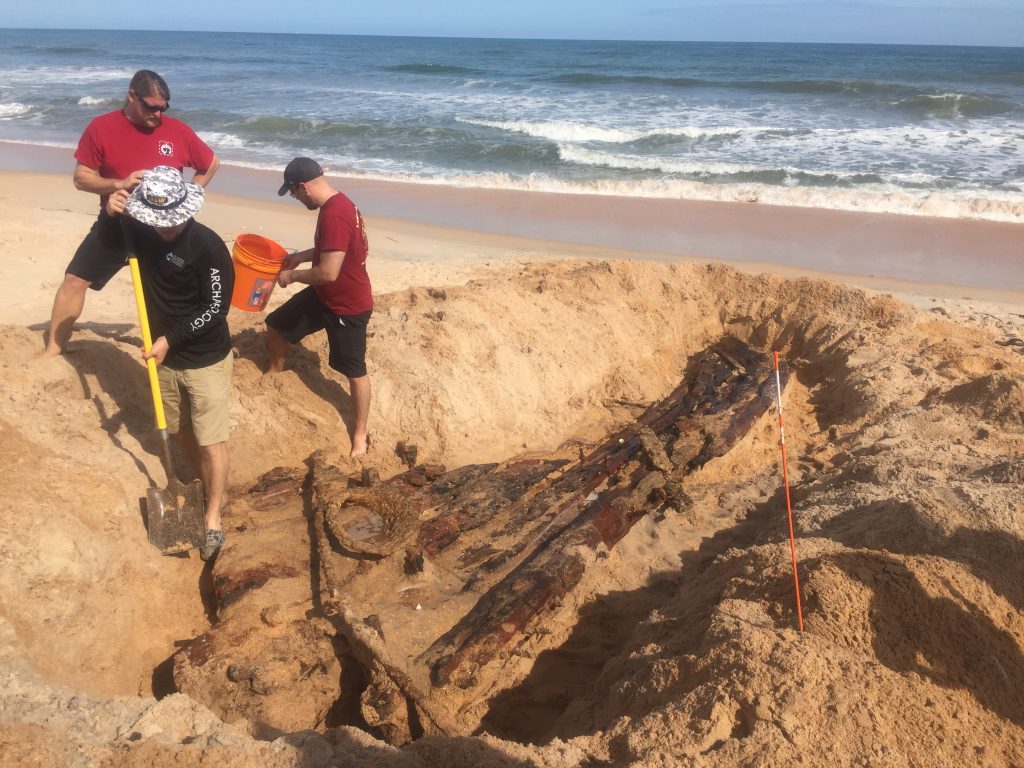 A shipwreck that was uncovered on the beach after a storm.
A shipwreck that was uncovered on the beach after a storm.
